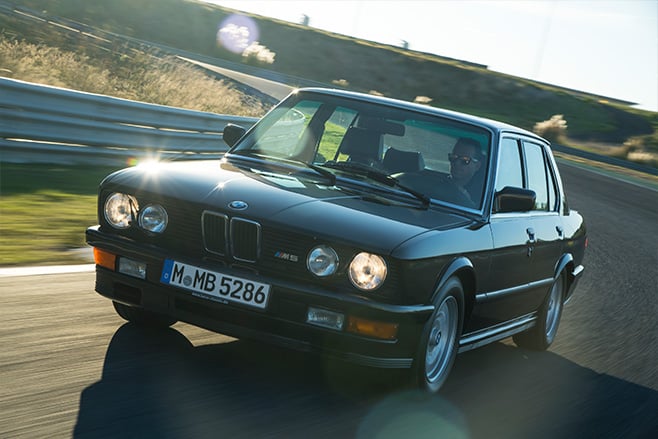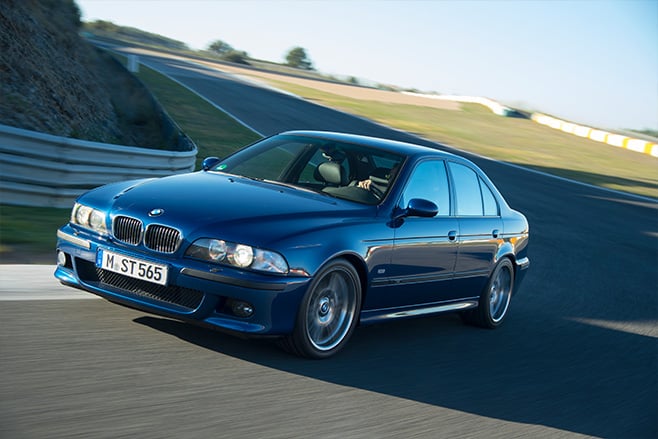Bavaria’s super-sedan, the BMW M5, has developed over decades of tweaks and evolution.
So, with a new M5 on the way, let’s look back to see where BMW’s ‘hoon in a suit’ started out.
E28 BMW M5 – 1985 to 1987
With an engine born of BMW’s legendary M1 and a chassis from the then-top-spec 535i, there was almost no way the first M5 wasn’t going to start something big.
Its atmo 3.5-litre inline six was good for 210kW/340Nm (a less powerful engine was used in the US) and allowed it to claim being the fastest sedan on the planet (at the time), the E28 M5 was actually quite visually understated compared to its lesser M535i sibling.

BMW says it built more than 2200 of them in Munich before production finished.
E34 BMW M5 – 1988 to 1995
A more common sight in Australia than the first M5, the E34 generation upped the performance game again, touting 232kW and a 0-100km/h run of 6.3 seconds. This came from the same 3.5-litre donk, though now with 80cc more displacement.

Additionally, a new bit of kit could be found under the M5 – adaptive suspension and an optional ‘Nürburgring suspension package’ which sharpened up the M5’s ride. Between 1988 and 1995, about 12,000 E34 M5s were sold, almost 900 of which were M5 Touring wagons.
E39 BMW M5 – 1998 to 2003
The late 1990s saw the ushering in of a new age of M5 – one that was V8 powered.
With 294kW and 500Nm at its disposal thanks to a 4.9-litre bent eight, the M5 was now doing 100km/h sprints in just 5.3 seconds. It was a sports sedan for the 21st century – a part it looked after ditching some of its sharper lines – but it was a couple of years early.

And at 1790kg it needed to be, but the six-manual and the epic V8 roar would more than make up for its heft. Plus, the M5’s tricks didn’t end with its power. Its redline would even rise as the engine’s temperature became more aligned with spirited driving.
By mid-2003, about 20,500 E39 M5 were spoken for, though not many of those can be found in Australia.
E60 BMW M5 – 2005 to 2010
Handing out cylinders like it was learning from Oprah Winfrey, BMW tacked a couple more onto the E60 M5 in the age of displacement. Before downsizing and turbocharging took hold, BMW was offering the most cylinder it had ever offered in most of its M-cars. This was also the age of the V8 M3.

By 2007, the return of the Touring had arrived and, within three years had made up 1025 of the 20,548 M5s that had sold by 2010.
F10 BMW M5 – 2011 to 2017
The ‘current’ – if you consider we haven’t actually laid eyes on the 2018 M5 in Oz yet – generation dialled the cylinders back, but made up for it by sticking a couple of turbos in the engine bay.
The result was a 4.4-litre twin-turbo V8 with 412kW/680Nm and a 4.4s sprint to 100km/h. However, this M5 also introduced the ‘Competition’ variant, which added more power (11kW of it) and knocked a tenth off the 0-100km/h time.

F90 BMW M5 – 2018 to ???
A big change is coming to the new 2018 BMW M5, but it’s got nothing to do with the engine.

Its 3.4s sprint to 100km/h should convince otherwise. It’ll hit Aussie shores in Q2 2018, with a price tag of $199,900. Plus, look out for MOTOR’s January issue to see it take on its closest rival.






